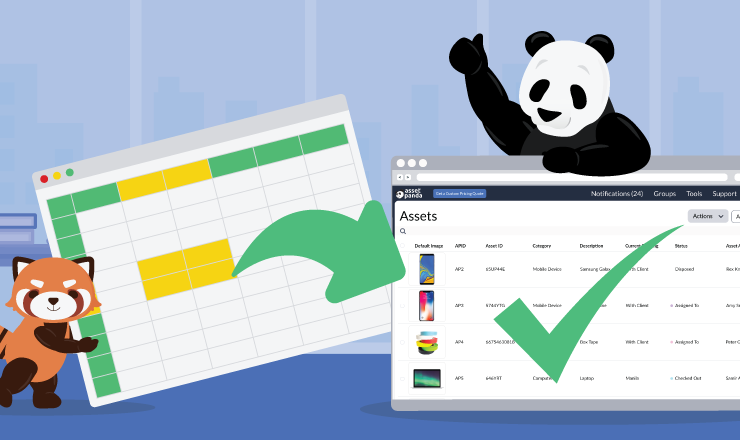Your Asset Monitoring System: Flexibility, Scalability are Key

Take Control of Your Assets
A personalized demo is just one click away.
If you’ve been thinking about how to bring greater efficiencies to your operations, an asset monitoring system may have crossed your mind. The term asset monitoring system means much the same thing as an asset tracking system – in other words, a centralized database for your fixed asset data, along with a means for scanning, identifying, monitoring and tracking the whereabouts of your assets. It’s typically a combination of software, barcode scanners, barcode labels or asset tags, and either a web or mobile app. The best asset monitoring system for you likely offers mobile access. The modern workday involves time away from the office, and you should be able to access your asset data no matter where you happen to be. Web apps are also useful, as there most certainly will be occasions during which you’re in your office and would prefer to view your asset data from your computer. Flexibility is key.
Your asset monitoring system should adapt to the way you work.
So why do I need an asset monitoring system?
If you’re new to the topic of asset tracking, you may not yet see the value in an asset monitoring system. Think of it this way, however: From the time you initially acquire an asset to the time you ultimately remove it from your inventory, it may change locations, change hands and almost certainly require periodic maintenance in order to remain in good working order.
Loss, theft and early breakdown are expensive
Without an accurate and real-time way to track your fixed assets, you could lose items and have to replace them. Or you might not even know that an asset is missing. In fact, you might continue to pay insurance on that ghost asset for months. You could very easily overlook maintenance, and an asset could subsequently break down prematurely, bringing your productivity to a halt. Or perhaps an employee needs a particular asset, but you don’t have any way of tracking down exactly who has it or where it might be.
Number crunching matters
When it comes to time to report values for accounting and compliance purposes, without an asset monitoring system, calculating the depreciation on all of your assets could be very challenging. You might have to resort to guesswork, which could result in penalties later should you make a mistake.
These are among the most compelling reasons why you should consider an asset monitoring system. The efficiencies you stand to gain are substantial. You’ll save time and money and avoid frustration while you maximize the lifespan of each of your vital fixed assets.
Flexibility and scalability are important
Technology continues to evolve at a rapid pace. You don’t want to invest in an asset monitoring system, then, that isn’t flexible enough to adapt as new technologies become available. A flexible solution is the way to go. You’ll also want a product that’s highly customizable, intuitive and easy to understand, and streamlined in its approach.
The Asset Panda solution
Asset Panda is the most powerful, yet simple asset monitoring system in the world. Download our free mobile app (or use the web app, if you prefer), and the entire lifecycle of your assets is as near as the palm of your hand. Because Asset Panda syncs with the cloud, your asset data is always in real time, promoting accuracy and accountability throughout your organization.
Asset Panda has been named #104 on the inc. 5000 list, #9 in the Software Industry, and #4 overall in Texas. The best way to understand Asset Panda’s capabilities is to try it free for 14 days.
Take Control of Your Assets
A personalized demo is just one click away.
Related News & Press

Learn more from an Asset Panda expert
Get a FREE consultation with an asset tracking expert to find out how you can transform your asset tracking.
Contact our Sales Team at (888) 928-6112


